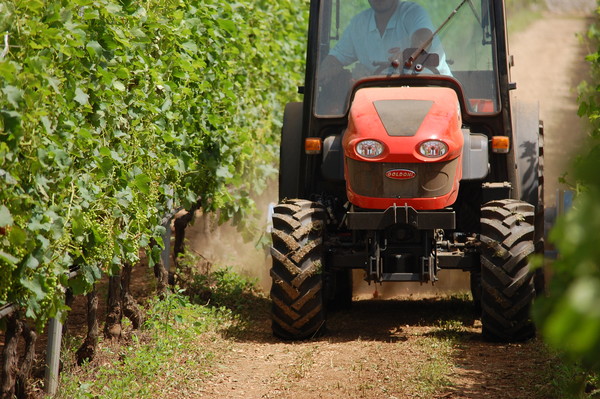
Mechanization in Europe: public calls for tender market
The demand of agricultural machinery arriving in single areas of the European Union can be facilitated through public calls for tender in which manufacturers intending to provide the specific technology supplies requested. The Italian Agricultural Machinery Manufacturers Federation, FederUnacoma, has signed an agreement with Se.Ri.Gest for the purpose of monitoring calls for tender and aimed at participation of companies bidding
The economic situation which inevitably makes it necessary for Italian SMI manufacturers to expand beyond the national border in search of promoting their products abroad, hoping for the opportunity to join those which have already made such a move. This means they must not underestimate the ranges of demand arriving with public calls for tender set up within the European Union. These requests for technologies are posted from single territories and also through EU financing targeted on the acquisition of the products required for sustainable development as well as important primary sector strategies in EU and non-EU territories intending to raise their economic levels and improve productivity and employment.
For these reasons public institutions and private agencies focus on this issue and attempt to equip these manufacturers with instruments for monitoring and provide them with assistance in the field of calls for tender. An example is the free
TenderLab training course organized by MAECI and ICE, the Italian Trade Agency, for laying a more solid groundwork for directing these companies to approach calls for tenders and furnishing instruments for their first steps.
A look at the public agricultural mechanization market involves data for the EU Member States in the three years 2015-2017 of public calls for tender data reported by the EU TED (Tender Electronic Daily http://ted.europa.eu/TED/main/HomePage.do) for this period. As is known, EU regulations on public calls for tender require Member State administrations to publish these tenders on lots of goods and services which exceed 209,000 € but the regulations also allow the option for tenders below this monetary ceiling to be published. Generally, TED publications provide data on the components most qualified for the public market but the publications of tenders below the 209,000 € should not be excluded. Moreover, what must be considered is that it is not possible to analyze the consistency and trend of the value of the market because numerous Member States’ administrations do not publish the values of their tenders which are reported only in the documents of the tender. This means analyses are based on the number of calls for tenders published.
Considering all the types of machinery and equipment in the “technologies for agriculture” system, 653 tenders were published in 2017 compared to 571 in 2015 and 672 in 2016. Thus it can be said that the “over the ceiling” market in the EU shows significant consistency, especially in light of the very marginal Italian market where there were only 12 calls for tender in the three year period. As regards geographic distribution in the same three years, when there was a total of 1,896 calls for tenders, France was clearly the leading country with 502 public tenders, 26,5% of the total, followed further down by Slovakia with 212 tenders, the Czech Republic at 203, Germany with 197, Poland with 111 and the United Kingdom at 101.
Thus the data show significant geographic concentration in that the six most important countries account for nearly 70% of the market. These are followed by three Eastern European countries, Romania, Bulgaria and Hungary covering 10% of the market. The 2017 data confirm the dominant role played by France with 28% of all the tenders while the seven most important countries account for more than 73% of the calls for tenders. Over the three years for the countries most involved, the numbers disclose a strongly positive trend for Slovakia at plus 215%, Bulgaria gaining 155%, Poland plus 41% and the UK increasing by 30%. Also seen were a 17% rise in tenders in France and Hungary 7% up in Germany whereas the increase for the Czech Republic came to 27%.
Moving from a look into geography to analyses of the market of the products of reference, consideration must be given to tenders procurement. In fact, a single public tender called by a public agency frequently covers procurement of various lots of supplies related to the products to acquire.
Thus the number of procurement supplies for 2015-2017 exceeded the number of tenders to come to 2,569.
The largest number of in the merchandise categories in the lots was for 681 lots for tractors or 25% of total supplies. The trend over the three years showed a spike in 2016 with 310 lots and a marginal increase came in 2017 over 2015, 193 lots compared to 178.
Coming in second at 395 lots was the generic “agricultural machinery” category which does not allow the identification of specific technologies, following were specialized machines for agriculture and forestry. A substantial share of tender lots were for mowers at 246, and for gardening at 192. Slightly more than 100 lots were named for agricultural machine components and lawn mowers, The irrigation plants category drew 90 lots. Overall, the categories cited accounted for some 77% of the market. Analyses of the variations of the three years disclosed that the most dynamic sectors were for gardening, gaining by 37%, and mowers increasing by 35%. Also noteworthy were a 24.1% rise for irrigation plant and plus 13% for agricultural machinery components whereas tractors rose by 8%.








